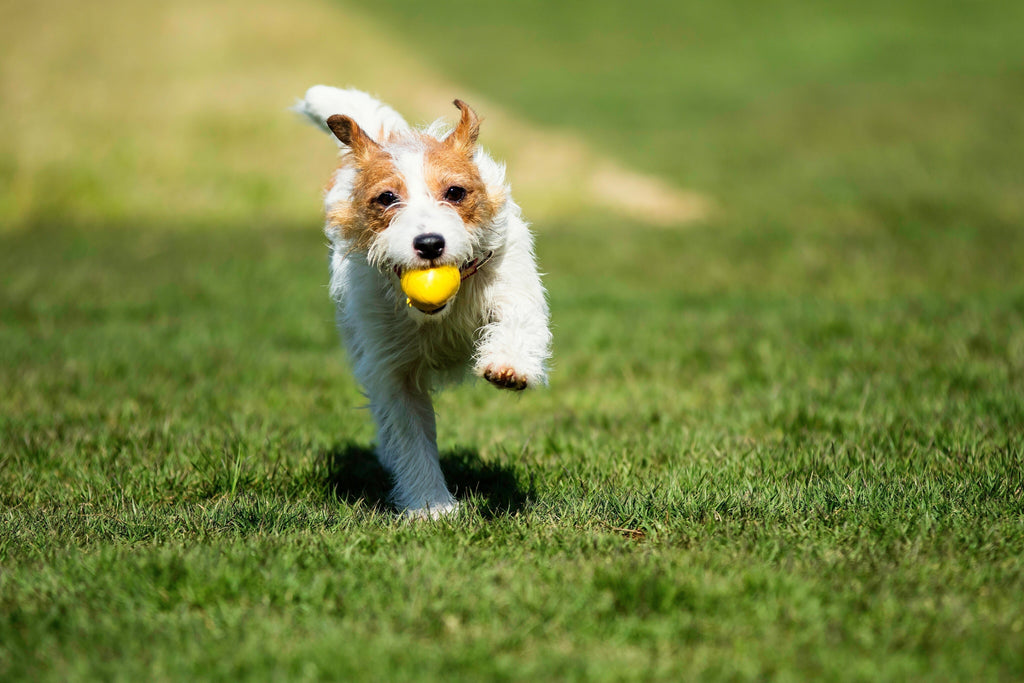Foxtail Grass in Australia: What Every Dog Pawrent Needs to Know

Quick Summary
-
What is foxtail grass? A common Australian grass with fluffy seed heads; some species are native, others invasive.
-
Its role in the Australian Ecosystem: Provides erosion control and wildlife habitat, but invasive types can spread aggressively.
-
Why it’s dangerous for dogs: Foxtail grass has barbed seeds that can lodge in paws, ears, eyes, nose, or even migrate internally—causing infections, pain, or worse.
-
Warning signs to watch out for: Limping, sneezing, head shaking, eye irritation, lethargy, or loss of appetite.
-
Preventive measures: Avoid tall and dry grasses, mow lawns regularly, check and groom pets daily, and seek veterinary care if seeds become embedded in your pet's fur.
-
Conclusion: Harmless-looking foxtail seeds can be life-threatening for your pet. Your awareness and prevention are crucial to keep your fur baby safe.
A Quick Look at Foxtail Grass in Australia
Foxtail grass (Pennisetum and Cenchrus species) is a common sight across Australia, especially during the warmer months. With its soft, fluffy seed heads shaped like a fox’s tail, it might look harmless—even attractive in gardens and landscaping.
Some species, such as swamp foxtail grass (Pennisetum alopecuroides), are native to eastern Australia and play a role in erosion control, as well as providing habitat for wildlife (ANBG, Macquarie University). Others, however, are introduced species that have become invasive weeds, spreading along roadsides, vacant land, and disturbed soils (ShunCulture).
While foxtail grasses can support ecosystems, they come with one serious drawback: their barbed seed heads pose a real danger to pets.
Why Foxtail Grass Is Dangerous for Dogs

Foxtail seeds are designed to hitch a ride by hooking onto fur, clothing, or animal skin. Their barbed, arrow-like shape only moves one way: forward. Once attached, they can burrow deeper into a dog’s body and cause serious health problems (Pet Poison Helpline, Paws Academy).
Common Trouble Spots
-
Paws & Skin → Seeds get stuck between toes or under the skin, causing swelling, abscesses, and pain (Kinship).
-
Ears → Dogs may shake their head or scratch frantically as the awn digs deeper, sometimes rupturing the eardrum (Pet Poison Helpline).
-
Eyes → Seeds can scratch or embed in the eye, leading to ulcers, infections, or even blindness (Kinship).
-
Nose & Airways → Inhaled foxtails can cause violent sneezing, nasal discharge, or migrate to the lungs (Paws Academy).
-
Internal Organs → In rare cases, foxtail seeds travel through the body, causing life-threatening conditions such as pneumothorax, or infections, like pyothorax, that require surgery (Mitchell Vet Clinic). Rare cases have even reported migration into the spinal cord.
👉 In rural NSW, vets report that up to 2% of spring and summer visits are caused by grass seed issues, many linked to foxtails (Australian Dog Lover).
Signs Your Dog May Have a Foxtail Problem
Be on the lookout for:
-
Persistent limping or licking at paws
-
Head shaking, ear scratching, or tilting the head
-
Red, teary, or squinting eyes
-
Sudden sneezing fits or nasal discharge
-
Lethargy, fever, loss of appetite (possible internal migration)
If you notice these signs, seek veterinary help immediately—foxtails rarely work their way out on their own (SASH Veterinary Hospitals.
How Pawrents Can Protect Their Dogs

-
Avoid risk zones: Skip walks through tall, dry grass—especially in spring and summer (VetSupply).
-
Yard care: Keep your lawn trimmed short to stop seed heads from forming. Always remove foxtail plants if you spot them in your garden or backyard (Pet Poison Helpline).
-
Post-walk checks: Inspect your dog’s paws, ears, eyes, nose, and coat daily, especially after walks or playtime outside (Paws Academy).
-
Grooming: Regular brushing and keeping hair coat short helps spot seeds early (Hicks et al 2016).
-
Protective gear: In high-risk areas, consider dog boots or protective face masks, such as the Outfox Field Guard (Whole Dog Journal).
-
Vet care: Never attempt to dig out deeply embedded seeds yourself, as this can push them further in. Always let a vet handle it (Pet Wellness Direct).
Foxtail Grass & Dogs: Frequently Asked Questions
-
Is foxtail grass poisonous to dogs?
No, foxtail grass isn’t toxic if eaten. The danger comes from its barbed seeds (awns), which can burrow into a dog’s skin, ears, nose, or eyes, causing infections. -
How do I know if my dog has a foxtail seed lodged in its fur?
Watch for symptoms like limping, constant paw licking, sneezing fits, head shaking, eye redness, or sudden discomfort. If symptoms persist, visit your vet. -
Can foxtail seeds kill a dog?
Yes, in rare but severe cases. If seeds migrate internally (to the lungs, spine, or abdomen), they can cause life-threatening infections without prompt veterinary care. -
When is foxtail season in Australia?
Foxtail grasses typically produce seed heads in spring and summer, making these the highest-risk months for dogs. -
How can I prevent foxtail problems for my dog?
Avoid tall, dry grassy areas. Keep your yard trimmed and groom your dog regularly. Check their paws, ears, eyes, and coat after every walk. -
Can I remove a foxtail seed myself?
Only if it’s on the surface and easy to pluck out, if it’s embedded, don’t try to dig it out—it can push the seed deeper. Always seek veterinary help.
The Bottom Line
While dogs do eat grasses and though foxtail grasses have their place in Australia’s ecosystems, for pets, they still pose a significant hazard. These sharp little seeds can cause anything from minor irritation to life-threatening infections.
As a pawrent, staying alert during foxtail season, keeping up with yard care, and giving your dog a quick check after outdoor play can make all the difference in keeping them safe.
References
-
Hicks A et al (2016), Epidemiological investigation of grass seed foreign body-related disease in dogs of the Riverina District of rural Australia. Aust Vet J, 94: 67-75. https://doi.org/10.1111/avj.12414
-
Australian National Botanic Gardens – Cenchrus purpurascens
-
Macquarie University – Swamp Foxtail Grass
-
ShunCulture – Does Foxtail Grass Grow in Australia?
-
Pet Poison Helpline – Foxtail Grass: Foreign Body in Domestic Animals
-
Paws Academy – Foxtail Grass Seeds: A Canine Hazard in Canberra
-
Kinship – Foxtail Grass Seed & Dogs
-
Mitchell Vet Clinic – Foxtail Grass and How It Can Kill Your Dog
-
Australian Dog Lover – Protecting Dogs from Grass Seeds
-
SASH Veterinary Hospitals – Grass seeds in dogs
-
VetSupply – Foxtail Safety for Dogs
-
Whole Dog Journal – Foxtail Grass: Awning of Destruction
-
Pet Wellness Direct – Protect Your Dog from Foxtail Grass



